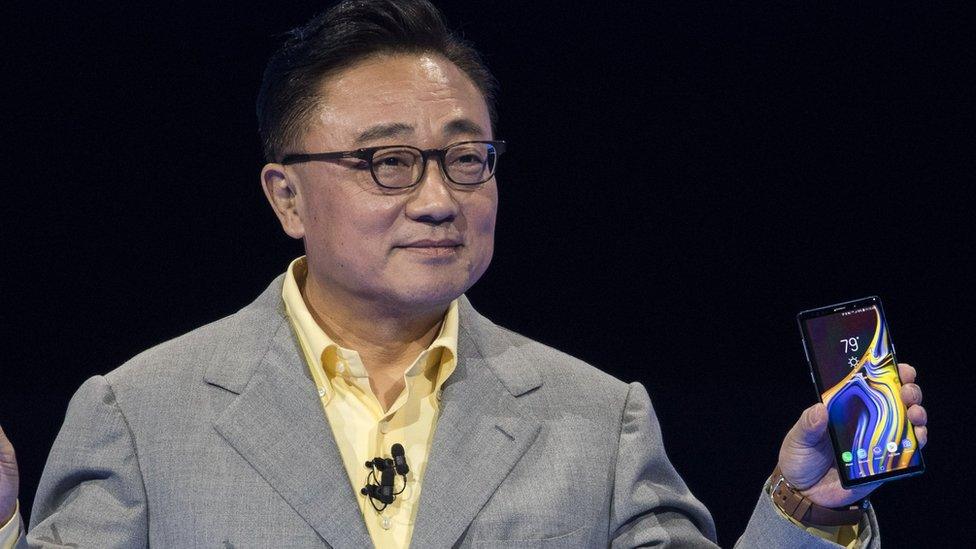Samsung folding smartphone revealed to developers
- Published
WATCH: How Samsung's flexible phone launch unfolded
Samsung has unveiled a folding handset at an event in San Francisco.
It described its Infinity Flex Display as "the foundation of the smartphone of tomorrow" and said it intended to start production within months.
When unfolded, the device resembles a 7.3in (18.5cm) tablet. When closed, a separate smaller "cover display" on the handset's other side comes into use.
Samsung has teased the concept for more than five years and had been vying with Huawei to show off a device first.
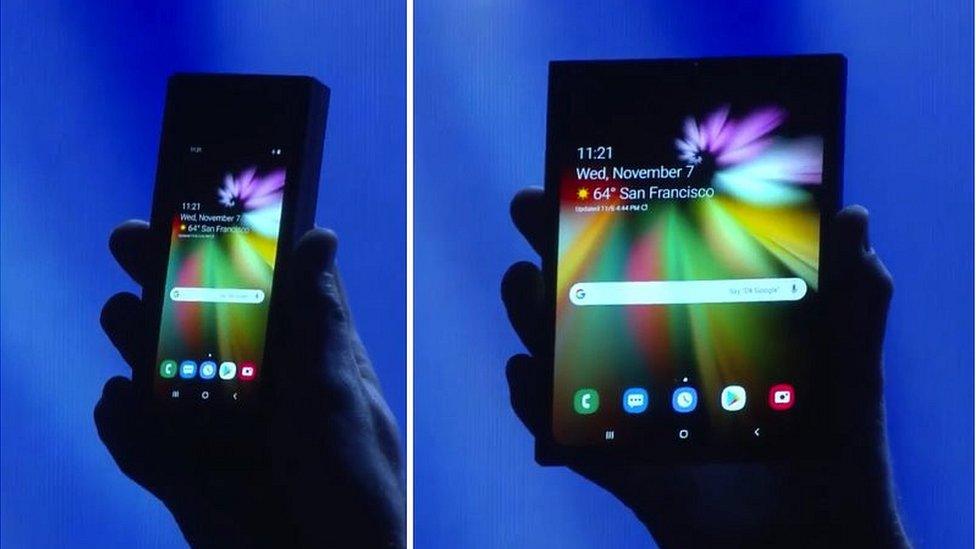
When closed a single screen is seen, but when open a separate display on the reverse comes into use
However, both were upstaged a week ago when little-known start-up Royole unveiled a foldable phone of its own.
Unlike Royole's FlexPai, Samsung obscured the final look of its device. It placed it in a case to hold off revealing the design until a later event.
It also did not disclose how it will brand the phone.
However, it did reveal that the forthcoming handset would be able to run three apps at once.
Justin Denison, the executive who unveiled the handset, noted that when folded up the device fitted "neatly inside" a jacket pocket thanks to the displays involved being thinner than those on earlier phones.
Unlike the FlexPai, the two sides of Samsung's device lie flat when closed. But this comes at the cost of there being noticeable breaks in its bezel, at least on the prototype demoed.

Samsung said the new design involved the invention of new materials
Shipments of Samsung's smartphones were 13.4% lower in the July-to-September quarter than for the same period the previous year, according to market research firm IDC.
Although the sector as a whole shrank over the 12 months, the South Korean firm still underperformed, with its market share slipping from 22.1% to 20.3%.
But analysts say a flexible phone has the potential to strengthen Samsung's brand and boost interest in its wider family of devices.
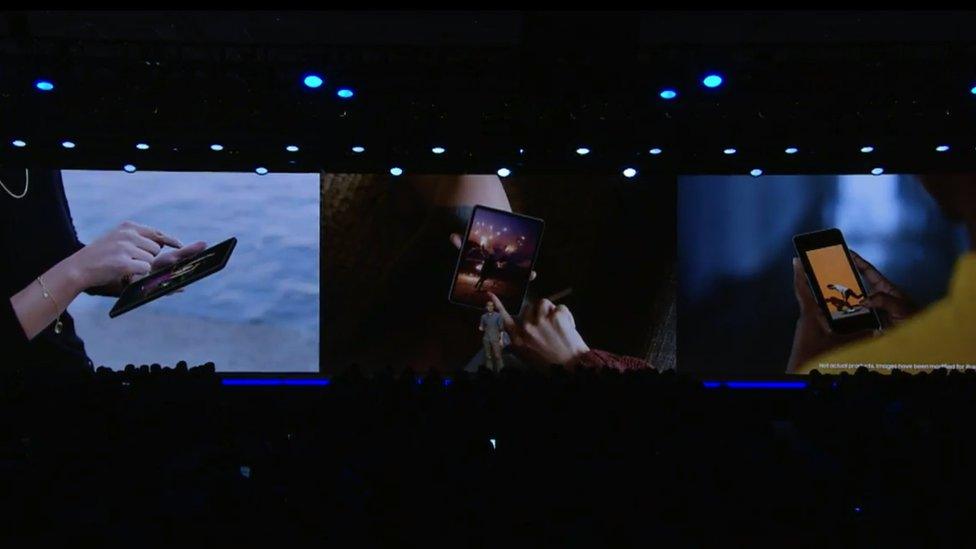
Samsung has promised to reveal more at a later event
"We've already had squeezable, swivel, clamshell and even foldable phones," commented IDC's Marta Pinto.
"Differentiation is super important. Samsung's smartphone sales are declining as it faces serious competition from Huawei and other Chinese brands.
"If it can bring a new and really interesting device to the market it could be a chance to regain momentum and return to growth."
Allow X content?
This article contains content provided by X. We ask for your permission before anything is loaded, as they may be using cookies and other technologies. You may want to read X’s cookie policy, external and privacy policy, external before accepting. To view this content choose ‘accept and continue’.
Google is also holding a developer event of its own for Android programmers.
One of its engineering chiefs announced that it would soon add support to the operating system to allow other manufactures to create foldable phones of their own.
It also tweeted an animation of the concept in action.
Allow X content?
This article contains content provided by X. We ask for your permission before anything is loaded, as they may be using cookies and other technologies. You may want to read X’s cookie policy, external and privacy policy, external before accepting. To view this content choose ‘accept and continue’.

Analysis: Dave Lee, North America technology reporter
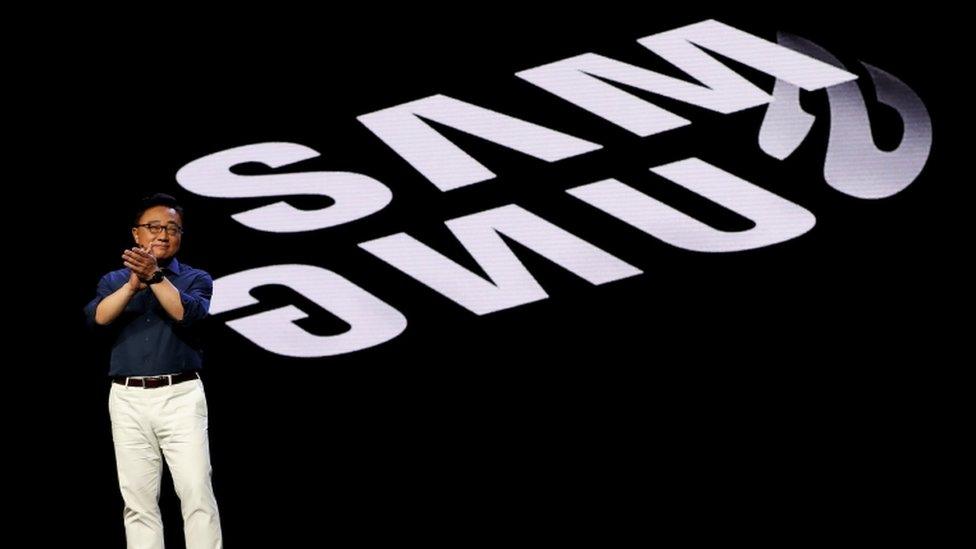
Finally, some interesting innovation in the smartphone space. Or smartphone and tablet space, I guess you could say.
A new form factor can be a huge boost to device-makers, but only if it makes sense.
A flip phone made previously big devices pocket-sized, and then smartphones brought button-less interaction to our palms.
But what will foldable screens bring?
One of the reasons why Samsung teased this device at its developers conference was to give software-makers a chance to think about how to make the most of the new possibilities a foldable screen might bring.
There's a reason why just about every new smartphone up until today looked the same: it worked.
To go foldable, there's likely to be big trade-offs on price, screen quality and perhaps weight - the device Samsung teased today did look chunky.
I'll hold back on a verdict until I get a chance to hold one for myself.

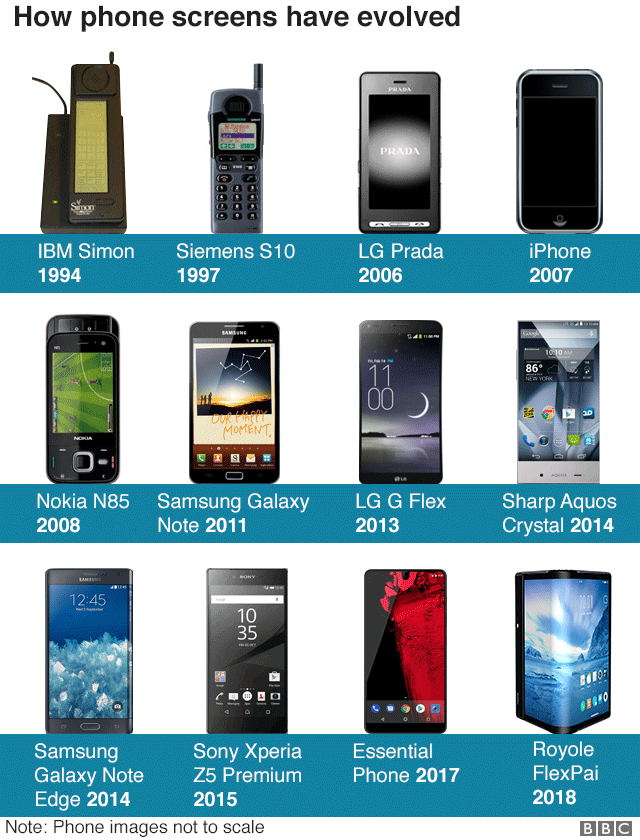
IBM Simon: The first mobile phone to offer a touchscreen user-interface - but its battery only lasted an hour.
Siemens S10: The first handset with a colour display - although only red, green, blue and white could be shown.
LG Prada: The handset debuted a capacitive touchscreen - detecting finger taps by changes in the display's electrical field rather than pressure.
iPhone: Apple made use of "multi-touch", detecting several points of contact - allowing pinch-to-zoom and other interactions.
Nokia N85: First phone with an OLED (organic light-emitting diode) display, letting it show deeper blacks and better contrast.
Samsung Galaxy Note: Although not the first "phablet", the handset proved there was demand for a 5+ inch display, despite claims it was "comically huge", external.
LG G Flex: The curved design was derided as being a gimmick, but points the way to the true "bendy" phones of the future.
Sharp Aquos Crystal: The phone's "edgeless" look foreshadowed today's trend to keep bezels to a minimum.
Samsung Galaxy Note Edge: Samsung's first handset to wrap its screen over one its sides used the extra space for notifications and app shortcuts.
Sony Xperia Z5 Premium: The smartphone premiered a 4K display before it was easy to obtain such ultra-high definition mobile content.
Essential Phone: The start-up beat Apple to featuring a camera notch in its display, which allowed the rest of the screen to extend upwards.
Royole FlexPai: The California-based start-up surprised the industry when it revealed the "world's first foldable phone" last month.
- Published7 November 2018
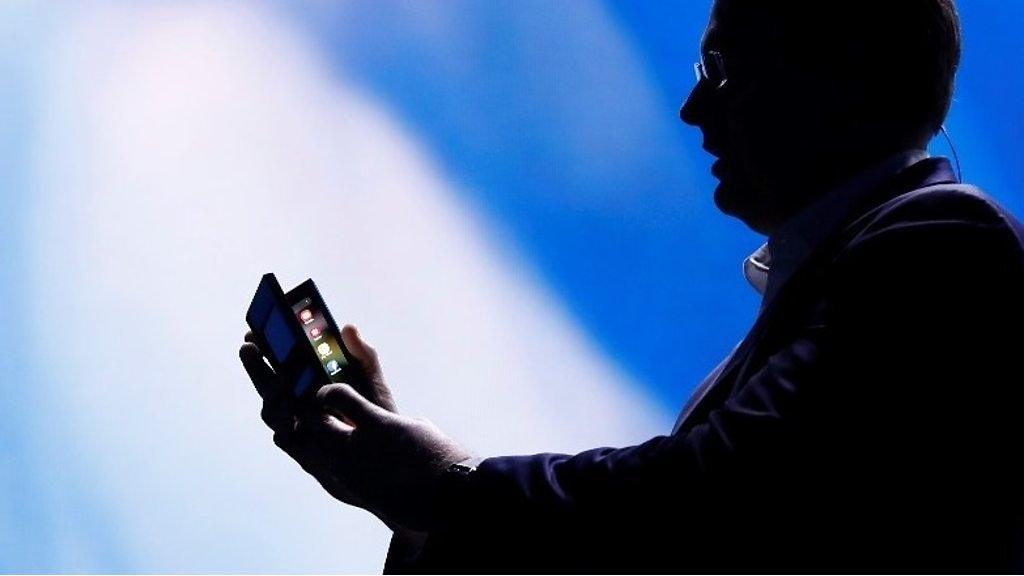
- Published31 October 2018
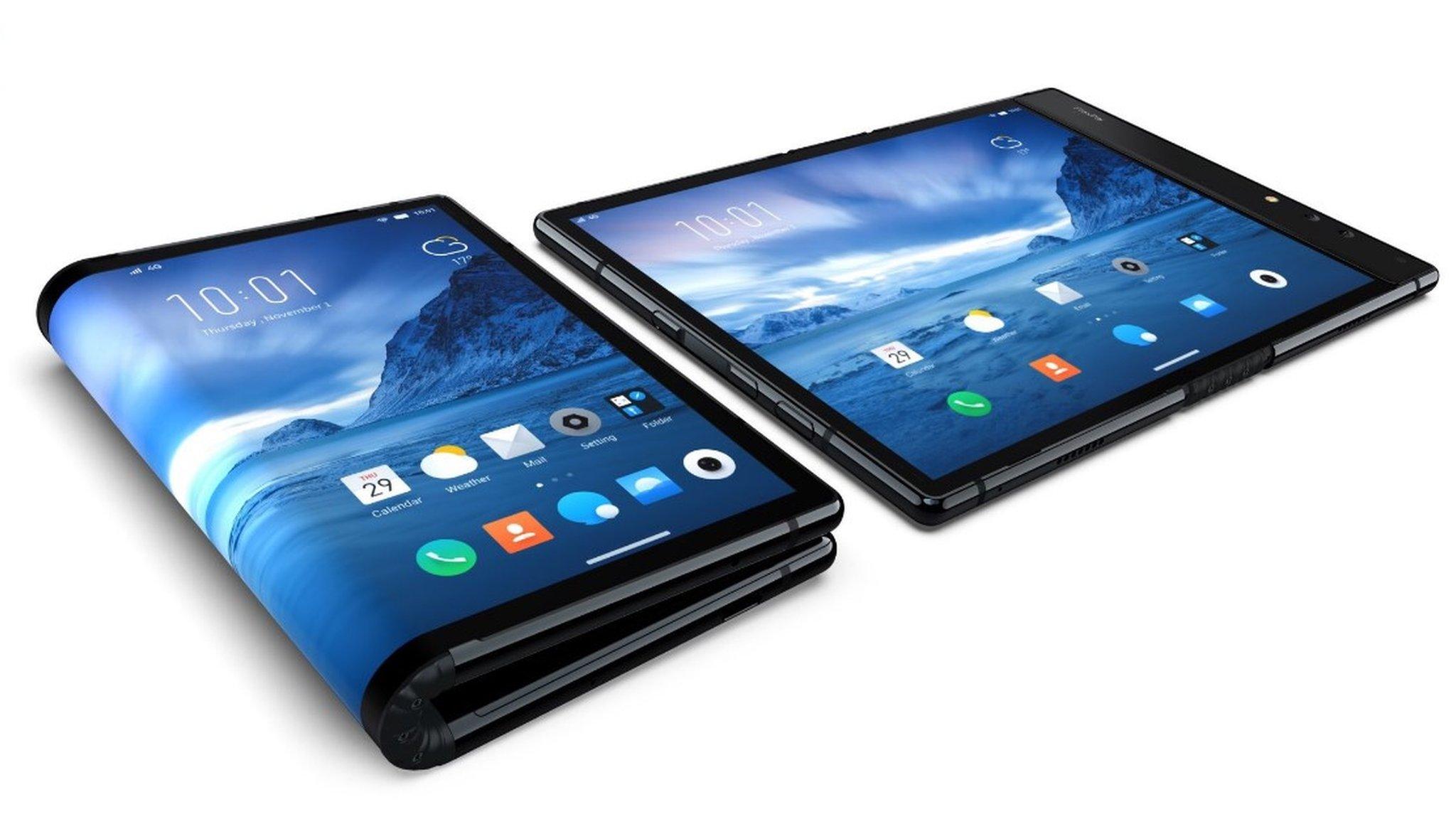
- Published5 September 2018
